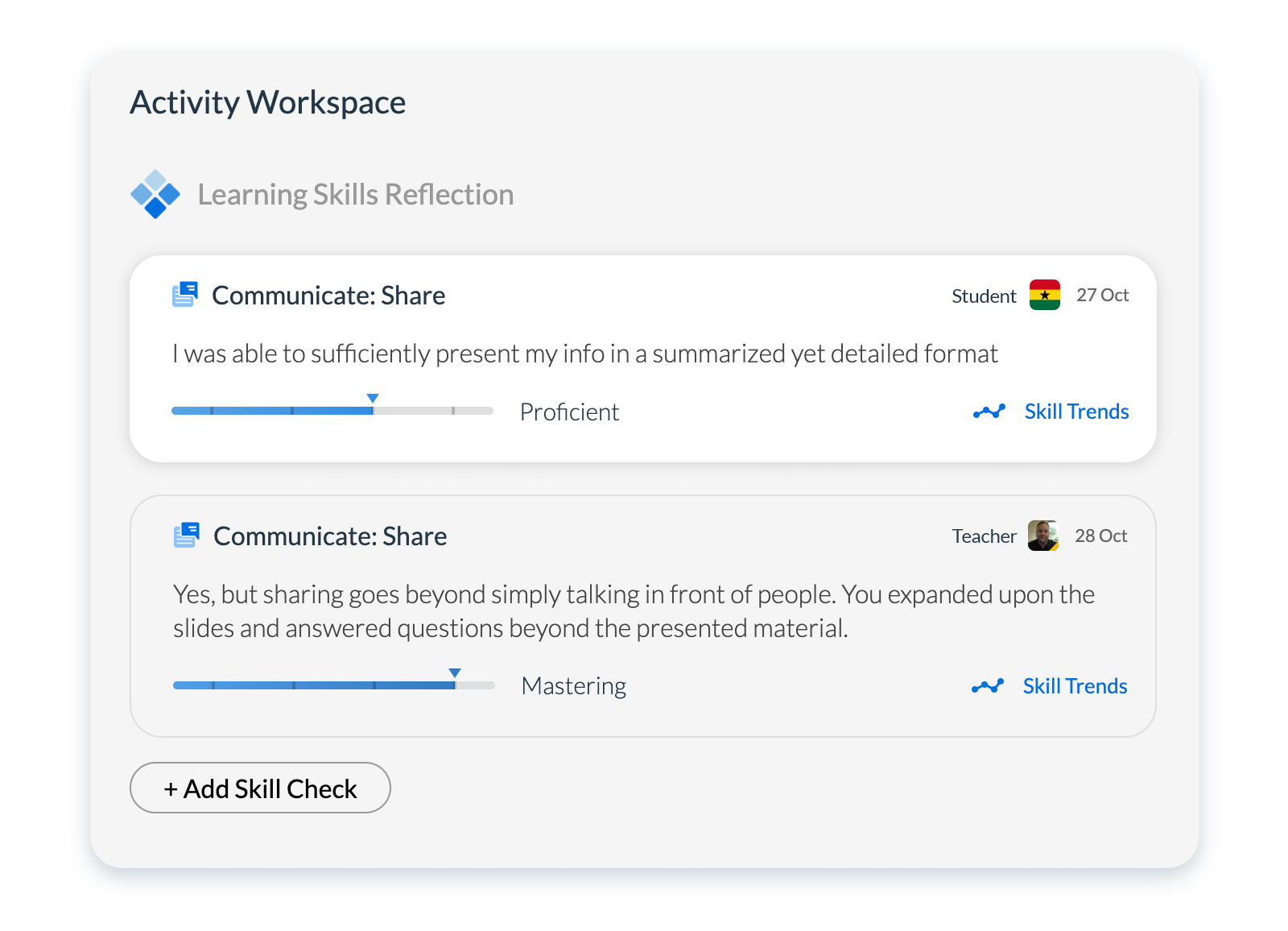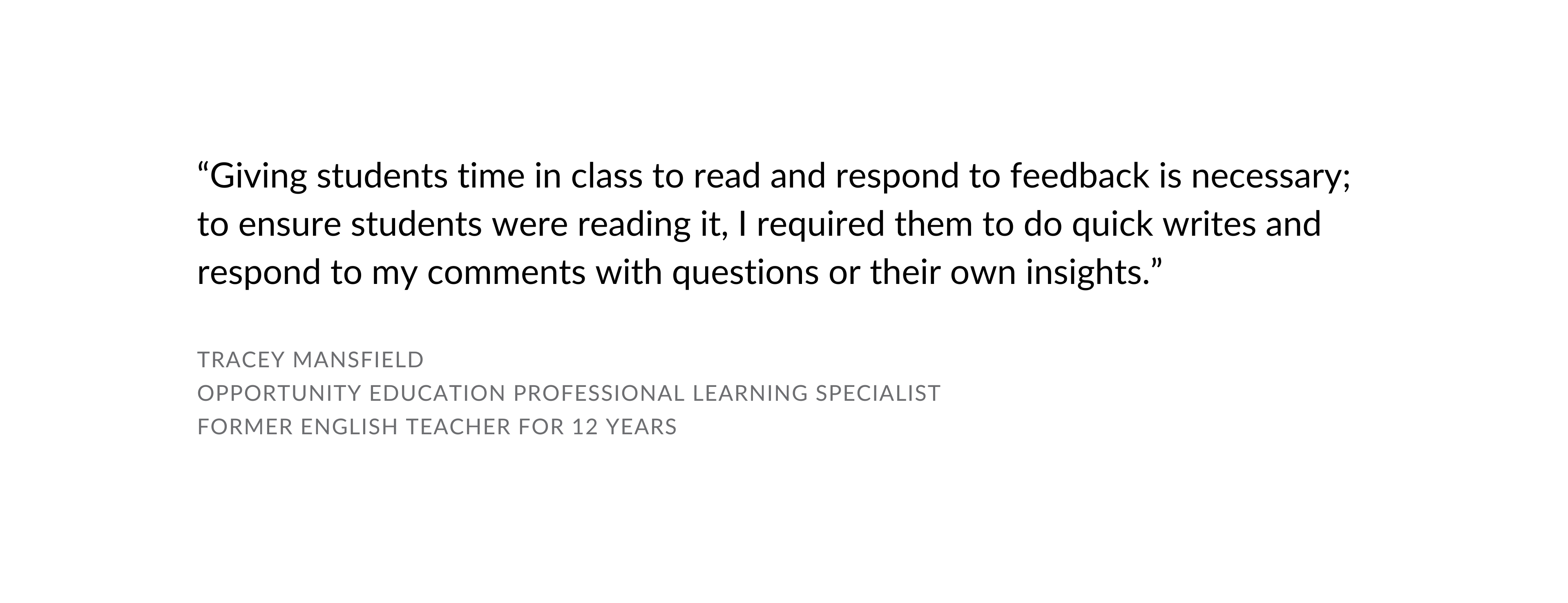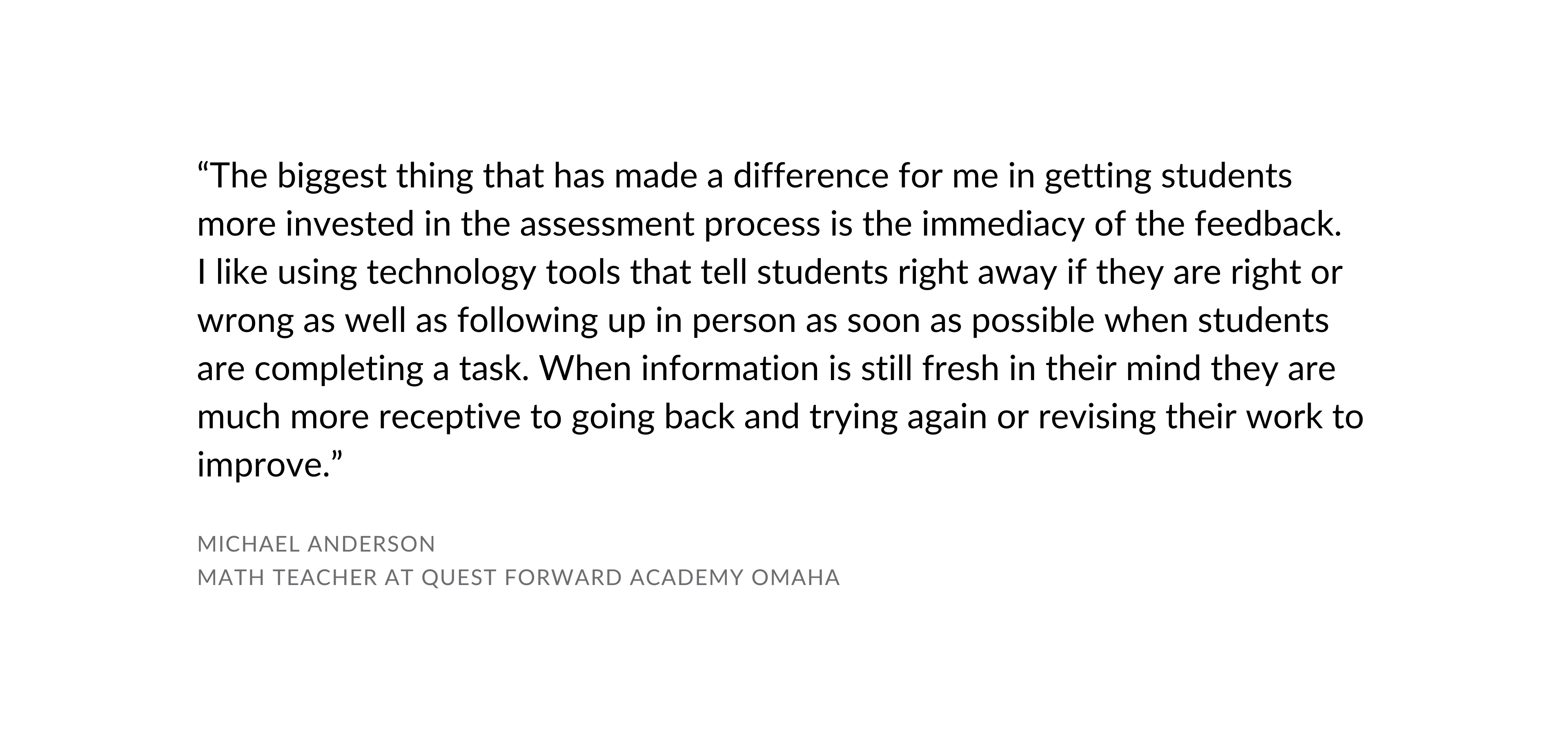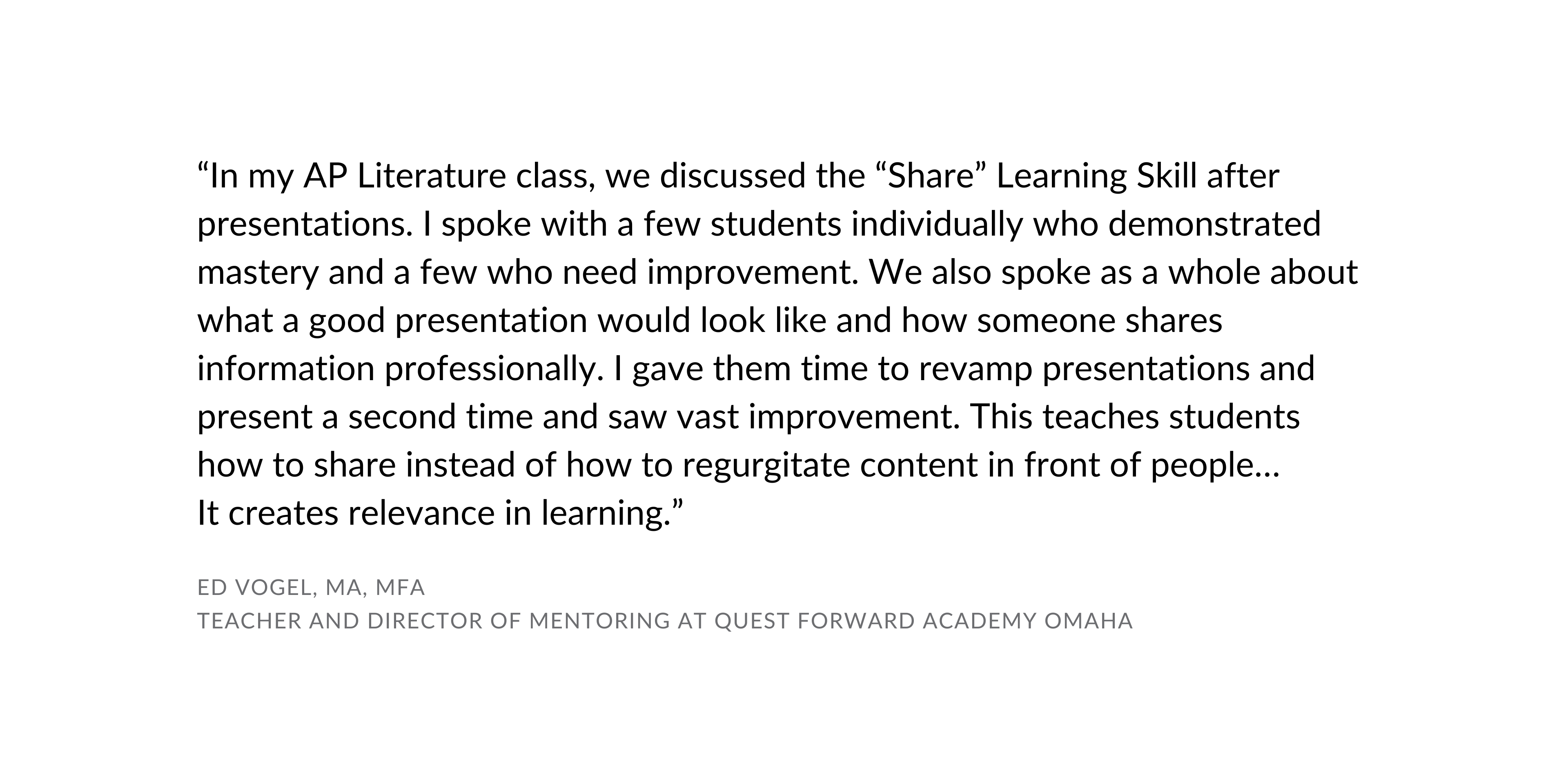4 Strategies to Support Assessment for Learning
As educators, our favorite assessments are those that help us and our students. They help us gauge where our students are, what they need, and what we can do to support them. They help students take actions to improve and to do so now, not at the end of a unit or term. Even better, they involve students in the process of assessing as they identify goals, monitor progress and reflect. This all sounds lovely, but the reality is that it can be hard and time-consuming to create and use effective assessments. The good news is there are actions you can take to create assessments that help both you and your students.
3 Types of Assessments
We often talk about three types of assessments:
- Assessment of Learning
- Assessment for Learning
- Assessment as Learning
| Assessment | Of Learning | For Learning | As Learning |
|---|---|---|---|
| Type | Summative | Formative | Formative |
| What | Teachers determine the progress or application of knowledge or skills against a standard. | Teachers and peers check progress and learning to help learners to determine how to improve. | Learner takes responsibility for their own learning and asks questions about their learning and the learning process and explores how to improve. |
| Who | Teacher | Teacher & Peers | Learner & Peers |
| How | Formal assessments used to collect evidence of student progress and may be used for achievement grading on grades. | Involves formal and informal assessment activities as part of learning and to inform the planning of future learning. | Learners use formal and informal feedback and self-assessment to help understand the next steps in learning. |
| When | Periodic Report | Ongoing Feedback | Continual Reflection |
| Why | Ranking and reporting | Improve learning | Deeper learning and learning how to learn |
| Emphasis | Scoring, grades, and competition | Feedback, support, and collaboration | Collaboration, reflection, and self-evaluation |
From Harapnuik, D. (2002). Assessment OF/FOR/AS Learning. It’s About Learning: Creating Significant Learning Environments. Blog.
Most of you, especially those teaching in public schools, have state or county-mandated assessments of learning. Those are unavoidable and they do serve a valuable purpose, primarily ranking and reporting. But they aren’t the only way, and probably not the most effective way, for you to assess student learning. Assessment for learning and assessment as learning allow teachers to better support students. Students learn more deeply and own their learning when they are involved in the assessment process.
4 Strategies to Support Assessment for/as Learning
We asked a few of our teacher and professional learning friends to share some of the strategies they use for supporting assessment for/as learning in the classroom. Here’s what they had to say.
1. Ask students to reflect and self-assess. For example, have students submit a short reflection with their assignments. Students will become more aware of the skills they’re practicing and you will gain insight into how to better support them. In this example, a student reflected on how well they shared information during a presentation. Their teacher responded to their work and reflection and they discussed the work, reflection, and more detailed feedback in person. 
An example of a reflection completed by a student at Quest Forward Academy Omaha and shared with their teacher as they completed an assignment.
2. Encourage students to respond to and discuss feedback. Assessment often sounds like something done to students and it doesn’t elicit the most pleasant responses or memories for many students (and for us adults, too!). Instead, reframe assessment as a conversation about student performance and learning, and one that students can lead and contribute to. Here are a few different ways to do that:
a. Ask students to respond to feedback with either a question or a goal.
b. Use feedback sentence starters to help students effectively respond to the feedback they receive. For example…
-
-
When you said…I wondered if…
-
I’m not sure what you meant when you said…
-
I’ll consider changing…because…
-
I’ll consider doing…. next time, because….
-
c. Create spaces and time to discuss key takeaways and actions students can take to improve. One option is to meet 1:1 with each student as students work individually or in groups on a project or assignment. Let students lead the conversation!

3. Provide timely feedback. Feedback is most effective when students still have their work fresh in their minds (as opposed to a week later when they’ve already moved on). Providing timely feedback is hard because teachers need time to provide thoughtful feedback. Commenting in Google Docs and recording short audio or video clips to share with students can streamline the feedback process.

4. Provide feedback on skills, not just content and final products. When providing feedback, emphasize the skills students are practicing and ways they can improve. This helps them learn how to work and learn more effectively, which are skills they’ll use for the rest of their lives. Ed Vogel, a teacher at Quest Forward Academy Omaha, shares an example of how he encourages students to practice the skill of sharing, one of the twelve Learning Skills focused on at his school, along with four Work Skills and four Essential Habits.

Assessment for/as learning can feel overwhelming, so we recommend starting simple. Don’t try to change all your practices at once. Pick one or two strategies and learn to do them well.
For more guidance from Opportunity Education’s team, be sure to bookmark our blog. Or, feel free to contact us to find out about our professional learning services and upcoming products and resources for teachers.

